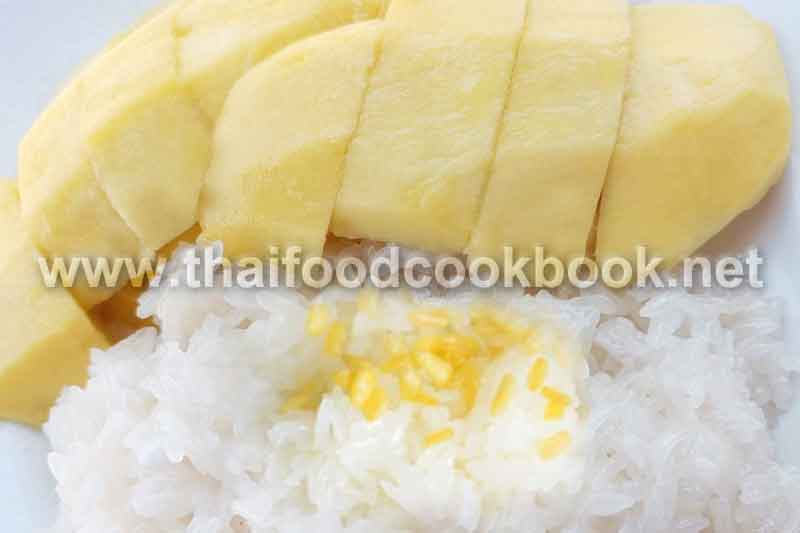Thai Rolled Coconut Pancake (Khanom Tokyo) – A Beloved Street Dessert That Blends Aroma, Texture, and Tradition
Thai dessert lovers often feel disappointed when they try to make Thai Rolled Coconut Pancake (Khanom Tokyo) at home but cannot achieve the same crispy yet slightly chewy texture like the authentic street food version. Many home cooks struggle with batter consistency, pan temperature, or creating the smooth coconut filling that sits perfectly inside the pancake. The truth is that the key to great Khanom Tokyo lies in the balance of ingredients, proper resting of the batter, and correct cooking technique. With the right recipe and guidance, this nostalgic snack becomes easy to master in your own kitchen. In this guide, you will learn everything from choosing the best flour to creating aromatic coconut fillings, rolling the pancakes at the perfect moment, and adding delicious variations so the result matches (or even surpasses) the classic version sold at Thai night markets.
Authentic Thai Rolled Coconut Pancake Ingredients and Traditional Filling Variations
To make traditional Khanom Tokyo, the batter must be light, slightly sweet, and thin enough to cook quickly on a hot pan. The classic filling usually includes fragrant shredded coconut or coconut custard, but modern vendors also use pandan custard, chocolate, taro, or even savory fillings like sausage or minced pork topped with sweet mayo. Below is the standard ingredient list most Thai street vendors use to achieve the signature aroma and texture.
Dry Ingredients for the Pancake Batter
- 1 cup all-purpose flour (sifted for smooth texture)
- 2 tablespoons cornstarch for crispiness
- 2 tablespoons sugar
- 1/4 teaspoon baking powder
- 1 pinch of salt
Wet Ingredients for the Pancake Batter
- 1 large egg
- 3/4 cup fresh milk (or coconut milk for extra fragrance)
- 1 teaspoon vanilla extract
- 1 tablespoon melted butter or vegetable oil
Traditional Coconut Filling
- 3/4 cup grated coconut meat (preferably young coconut)
- 1/4 cup coconut milk
- 1/4 cup palm sugar or light brown sugar
- 1 teaspoon rice flour (to thicken)
- 1/8 teaspoon salt
Step-by-Step Method for Cooking Crispy Khanom Tokyo at Home
A successful homemade Thai Rolled Coconut Pancake depends as much on preparation as on technique. Below is the step-by-step process used by experienced Thai street vendors.
Batter Preparation
- Combine flour, cornstarch, sugar, baking powder, and salt in a mixing bowl.
- In a separate bowl, whisk egg, milk, and vanilla extract until smooth.
- Slowly pour the wet mixture into the dry ingredients, whisking gently to avoid lumps.
- Add melted butter and mix again until the batter is silky.
- Let the batter rest for 10–15 minutes to allow gluten to relax, creating smoother pancakes.
Making the Coconut Filling
- In a small saucepan, heat coconut milk and palm sugar over low heat until dissolved.
- Add grated coconut and stir well.
- Sprinkle rice flour while stirring continuously until the mixture thickens.
- Add a pinch of salt to balance sweetness.
- Let the filling cool until it reaches a spreadable consistency.
Cooking and Rolling the Pancake
- Heat a non-stick pan or flat griddle on medium-low heat.
- Spoon a small circle of batter into the pan (about 3–4 inches wide).
- When tiny bubbles appear, spoon a line of coconut filling in the center.
- Fold or roll the pancake gently using a spatula before it becomes too crisp.
- Serve warm to retain its crispy exterior and creamy center.
Why Khanom Tokyo Texture Is the Secret to Its Popularity
The reason so many people adore Khanom Tokyo is the contrasting texture: a crispy outer shell with soft and aromatic coconut filling inside. If the batter is too thick, it becomes cakey and loses its street-style crispiness. If the heat is too high, it burns before the inside cooks through. The secret is using low to medium heat and thin batter layers so the pancake cooks fast while remaining flexible enough to roll. Many vendors also add a touch of cornstarch for crispness and ensure that the batter rests before cooking. Modern variations often include pandan custard, chocolate hazelnut spread, or sweet custard with egg yolk, making this dessert versatile for all ages.
Common Mistakes to Avoid
- Pouring batter too thick
- Cooking on heat that is too high or too low
- Using old coconut meat with no fragrance
- Rolling too late after the pancake hardens
- Not resting the batter before cooking
Modern Filling Ideas and Flavor Enhancements
Khanom Tokyo has evolved beyond its traditional coconut-based version. Street food culture has made it a playful dessert with both sweet and savory options. These variations keep the dessert fun and appealing for younger audiences while preserving its nostalgic roots.
Sweet Filling Ideas
- Pandan custard
- Chocolate or Nutella
- Banana caramel
- Matcha custard
- Cream cheese coconut
Savory Filling Ideas
- Sausage with sweet mayo
- Minced chicken with teriyaki
- Ham and cheese
- Egg and shredded pork
- Grilled bacon roll
Cooking Tools and Tips for Beginners
To achieve consistent results, it helps to use a flat crepe-style griddle, a silicone spatula, and a heat-resistant ladle for pouring smooth batter. Preheating the pan is important, and brushing a tiny amount of oil gives a beautiful golden color. If making multiple batches, stir the batter every few minutes to prevent flour from settling. Optionally, a squeeze bottle can be used for batter design—many vendors shape hearts or cartoon styles before rolling, especially when selling to children. Learning to roll quickly while the surface is still flexible prevents cracking or tearing, especially useful when practicing for selling or small events.
Additional Technique Tips
- Use a non-stick pan to avoid tearing
- Let filling cool to avoid making the pancake soggy
- Keep batter refrigerated if cooking in batches
- Use palm sugar for a more authentic Thai flavor
- Add pandan essence for aroma when using coconut milk batter
History, Cultural Value, and Street Food Popularity
Although many believe Khanom Tokyo originated in Thailand, its concept was loosely inspired by Japanese street snacks, then adapted with Thai coconut-based fillings and a thinner pancake batter. Over time, it became a signature treat sold near schools, markets, and mobile food stalls. The dessert carries cultural nostalgia for many Thais who grew up buying it after school. The combination of fragrant batter and warm filling continues to make it a favorite today. You can learn more about the culinary roots of thin rolled pancakes from external culinary references such as crêpe tradition, which mirrors the technique of thin batter cooking.
Why It Remains a Timeless Dessert
- Simple and affordable street snack
- Customizable with fillings
- Aromatic coconut flavor loved by all ages
- Visually fun to watch while cooked fresh
- Portable and easy to enjoy warm
Health-Friendly Tips for Homemade Versions
If you want a healthier version, use fresh coconut milk instead of dairy, reduce sugar in the batter, or choose fillings with natural sweetness such as palm sugar and young coconut. Whole wheat flour can be used for added fiber, though it slightly reduces crispiness. Coconut custard made from pandan and palm sugar is also more nutritious than processed chocolate spreads. Homemade versions also allow full control over sweetness level, making it suitable for kids and elderly dessert lovers who prefer a lighter recipe.
Better Ingredient Substitutions
- Honey or palm sugar instead of white sugar
- Coconut oil instead of butter
- Brown rice flour mixed with wheat flour for crispiness
- Soy milk or almond milk instead of dairy milk
- Fresh pandan juice for natural fragrance
Summary of Thai Rolled Coconut Pancake (Khanom Tokyo) and Why It Deserves a Place in Your Kitchen
Thai Rolled Coconut Pancake (Khanom Tokyo) is more than just a dessert—it is a warm nostalgic symbol of Thai street culture. By using the correct ingredients, following the proper batter technique, and rolling at the perfect moment, anyone can create café-quality or street-style Khanom Tokyo from home. The sweetness of coconut cream, crispy edges, and soft chewy center make it delightful for all ages. Whether served with traditional coconut filling or creative modern variations, this dessert remains a timeless favorite and a charming way to bring authentic Thai flavors into your kitchen.

